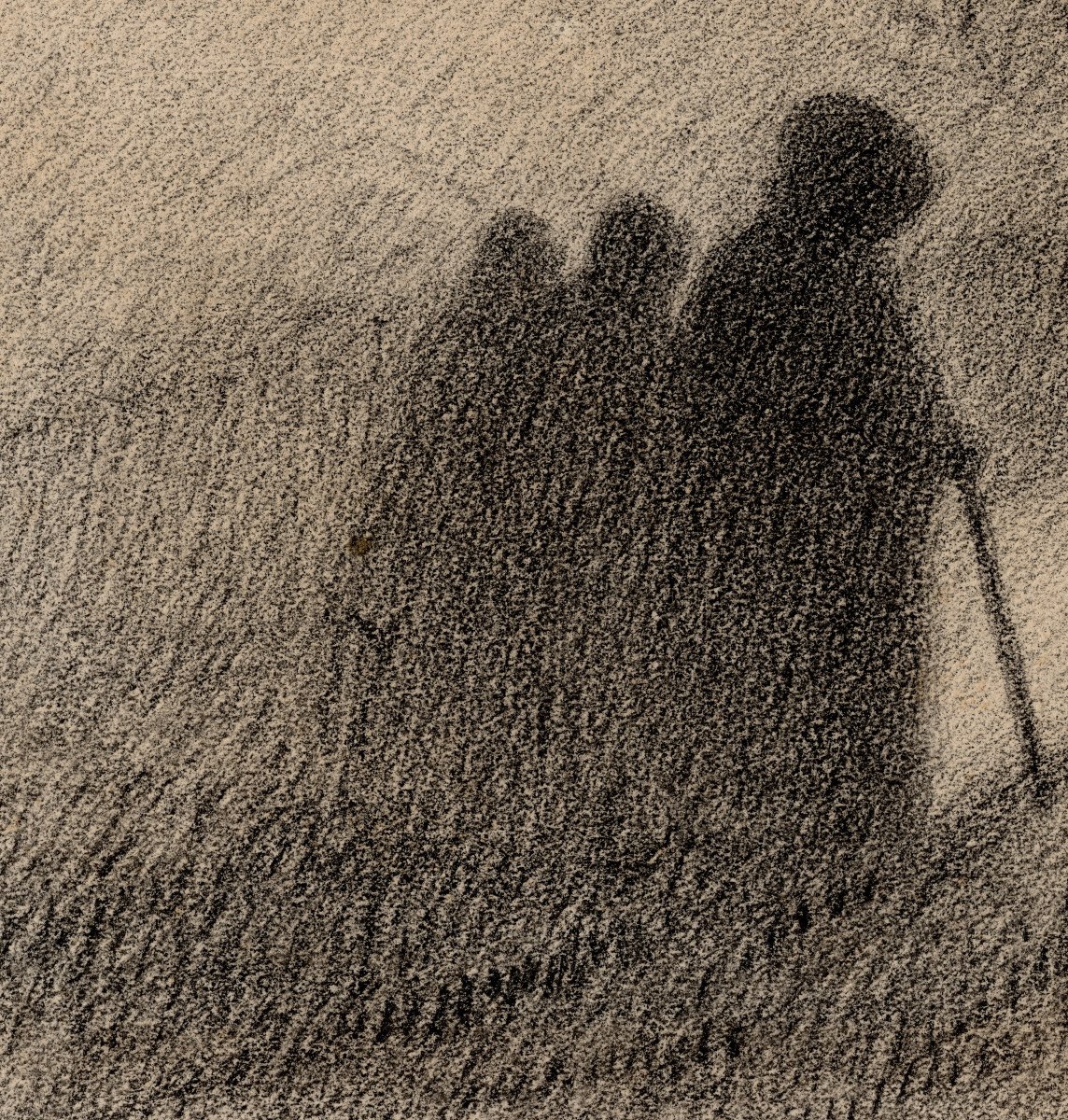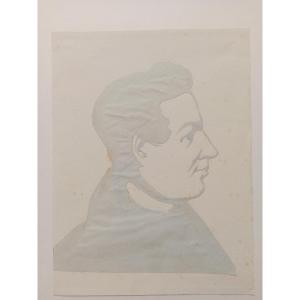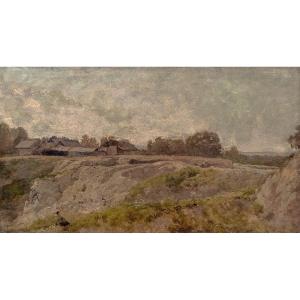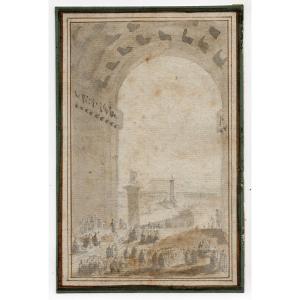A religious procession at dusk, circa 1880-1890
18.2 x 22.2 cm (composition)
20.1 x 24.5 cm (sheet)
Graphite pencil on paper
framing line in pencil
Signed bottom right, in pencil “JB. Artigue »
Very good condition
Sold as is, in sheet
* * *
Bernard Joseph Artigue (1859 – 1936) was a painter from the South-West of France, having worked notably in Toulouse, Albi and particularly in Blaye-les-Mines, in the department of Tarn, where his paintings still adorn today the walls of the old town hall. First the student of Jean-Paul Laurens, then of Alexandre Cabanel, for a short period in Paris, Artigue always remained very attentive to his time and, as a friend of the post-impressionist Henri Martin, he felt a strong interest for the new ideas of Pointillism, whether through the harmonies of colors in his paintings or, as here, through a graphic exploration of the nuances of black and white.
At the heart of the period of literary Symbolism, this scene of religious procession, mysterious, unexplained, would certainly find an echo in the literature of the time, somewhere in a chapter by Georges Rodenbach or in an atmosphere by Maeterlinck or Knut Hamsun. With titles of works such as "Asthmatic", "the Octogenarian", "the Last", "the Hot Hand", exhibited during the Salons between 1890 and 1910, the poetry of our artist evokes the austerity, the darkness and the mystery of the fin-de-siecle spirit. We choose to date this drawing from the artist's younger years, between 1880 and 1890.
By evoking this religious, and certainly funeral theme of a procession in the heart of the countryside, Artigue proves himself to be the heir of masters of Realism such as Jean-François Millet and Gustave Courbet, as well as the contemporary of inspired artists such as Ernest Laurent, Albert Lebourg, Charles-Marie Dulac and, here in particular, Henri Le Sidaner.
Along with a careful and silent contemplation, this drawing, very well composed, meticulous in its technique as much as it is evasive in its subject, places its author in the lineage of the finer masters of black and white. Without drawing a single line, this twilight scene appears and is revealed in the incessant rustling of the graphite pencil which brushes against the sheet and reveals all its nuances, without a single touch too much.
A drawn poem of darkness and gravity.




































 Le Magazine de PROANTIC
Le Magazine de PROANTIC TRÉSORS Magazine
TRÉSORS Magazine Rivista Artiquariato
Rivista Artiquariato